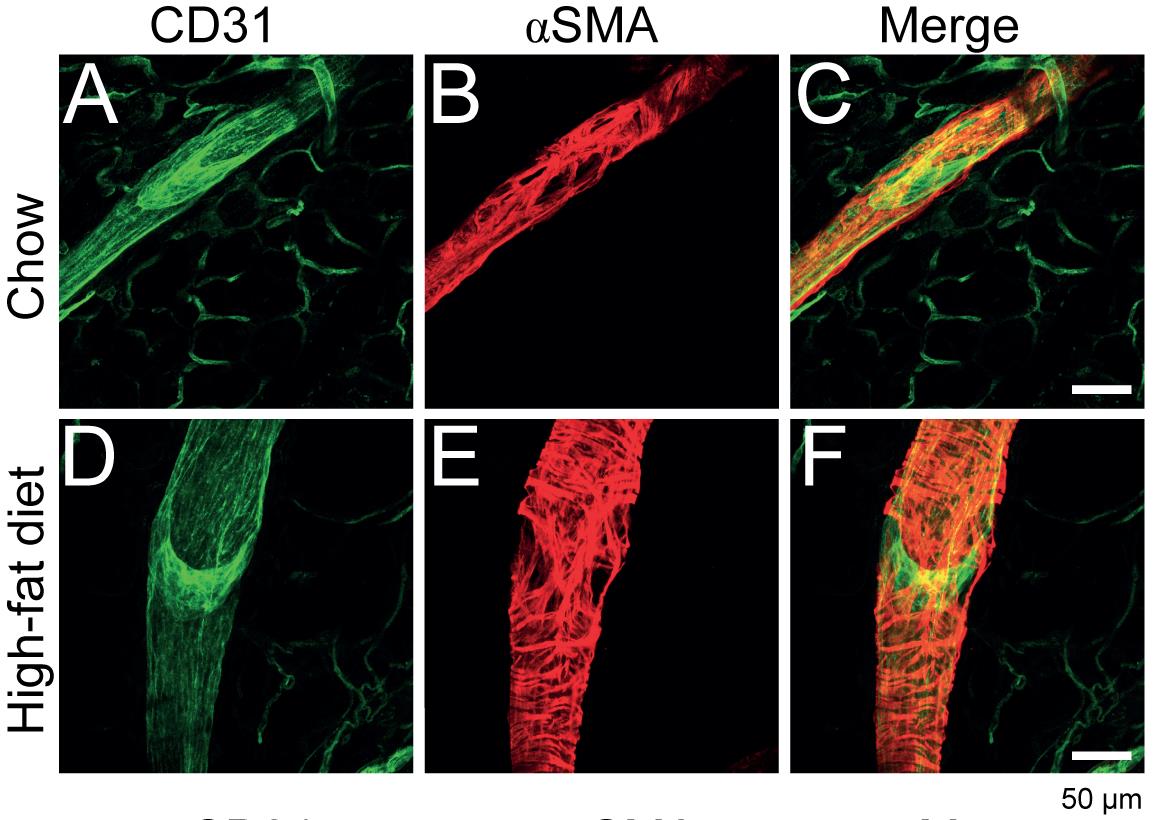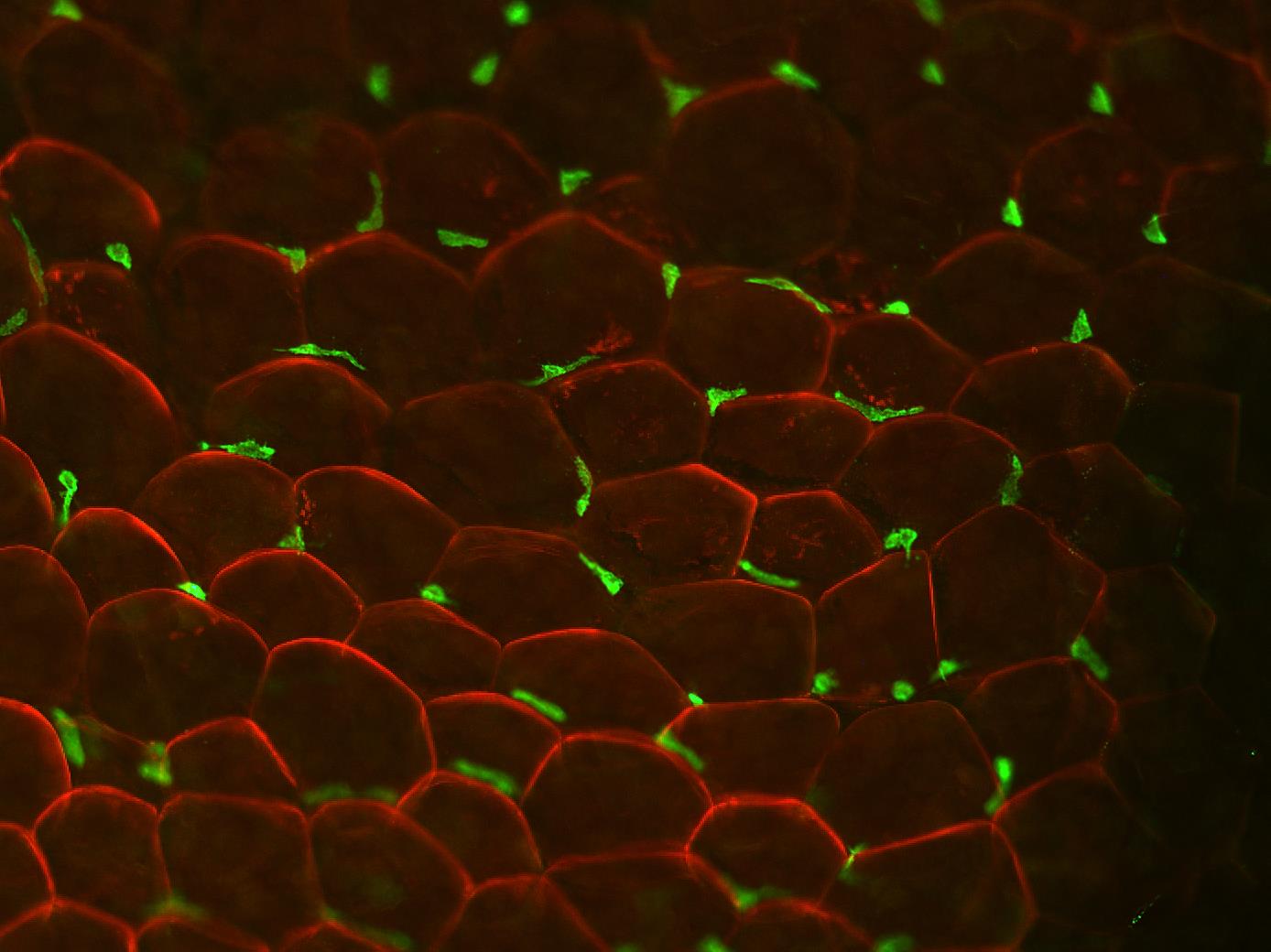|
Effect of obesity on lymphatic vessel function
In this project, we investigate if and how adipose tissue accumulation influences lymphatic function. Using a lymphatic specific tracer developed by our group, we perform in vivo near-infrared (NIR) imaging to assess the function of collecting lymphatic vessels in mice fed normal chow or high-fat diet (HFD). Our findings indicate that HFD-induced obesity is associated with impaired collecting lymphatic vessel function, as evidenced by reduced frequency of contractions and diminished response to mechanostimulation. Moreover, we found a significant negative correlation between collecting lymphatic vessel function and body weight. Whole mount analyses showed an enlargement of contractile collecting lymphatic vessels of the hind limb under HFD (Figure 1). Thus far, our findings indicate that adipose tissue expansion due to HFD leads to a functional impairment of the lymphatic vasculature, predominantly in collecting lymphatic vessels.

Figure 1. Dilated collecting lymphatic vessels after HFD.
Role of lymphangiogenic factors VEGF-C and VEGF-D in metabolic syndrome (in collaboration with Alitalo lab)
The aim of this project is to investigate the role of the lymphangiogenic growth factors VEGF-C and VEGF-D in obesity-associated metabolic syndrome and the macrophage polarization in the adipose tissue (Figure 2), using a K14-sVEGFR-3–Ig transgenic model, which expresses the extracellular domain of VEGFR-3, fused to the Fc domain of the Ig gamma chain, under the control of the keratin 14 promoter predominantly in the skin (Mäkinen et al., 2001 Nat Med). As a complementary approach, we use a K14-VEGF-C transgenic model, which conversely overexpresses the mature form of human VEGF-C.

Figure 2. Adipose tissue macrophages
Effects of lymph and lymph fractions on adipogenic differentiation of 3T3-L1 preadipocytes in vitro (in collaboration with Oliver lab).
Adipose tissue expansion is a common observation in the affected limbs of lymphedema patients. We investigate whether the accumulated lymph fluid might induce the expansion of adipose tissue, using in vitro experiments with 3T3-L1 cells and lymph fluid.
Publications
Blum S*, Karaman S*, Proulx ST, Ochsenbein AM, Luciani P, Leroux JC, Wolfrum C, Detmar M. Chronic high-fat diet impairs collecting lymphatic vessel function in mice.
PLOS ONE, in press.
Karaman S, Detmar M. Mechanisms of lymphatic metastasis.
J Clin Invest 124: 922-928, 2014
Hirakawa S, Detmar M, Karaman S. Lymphatics in nanophysiology.
Adv Drug Deliv Rev 2014 Feb 10. pii: S0169-409X(14)00012-X. doi: 10.1016/j.addr.2014.01.011. [Epub ahead of print]
Ochsenbein AM*, Karaman S*, Jurisic G, Detmar M. The role of neuropilin1/ semaphorin 3A signaling in lymphatic vessel development and maturation.
Adv Anat Embryol Cell Biol 214: 143-152, 2014
Valcheva N, Primorac A, Jurisic G, Hollmén M, Detmar M. The orphan adhesion G protein-coupled receptor GPR97 regulates migration of lymphatic endothelial cells via the small GTPases RhoA and Cdc42.
J Biol Chem 288: 35736-35748, 2013
*equally contributing authors.
|

